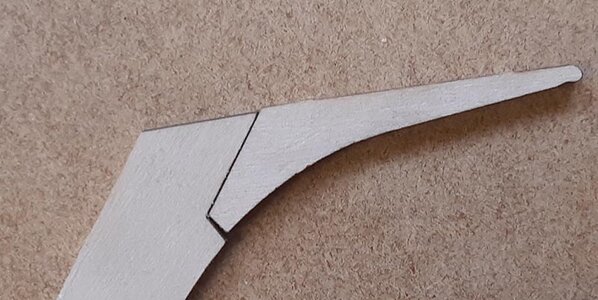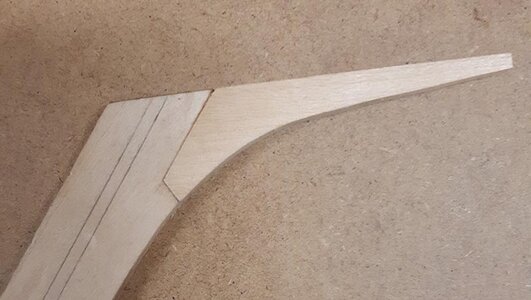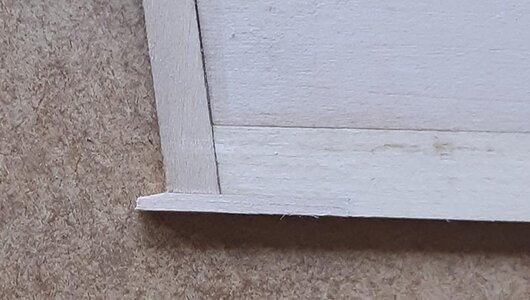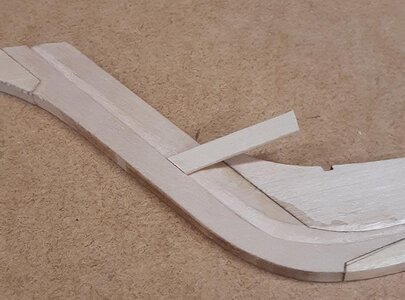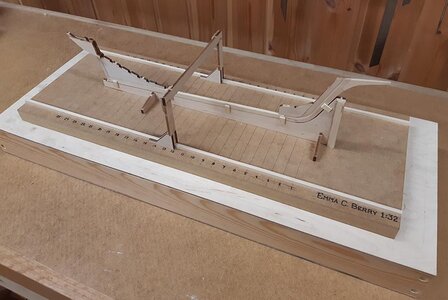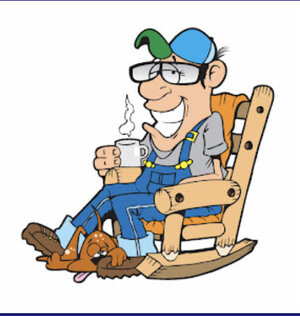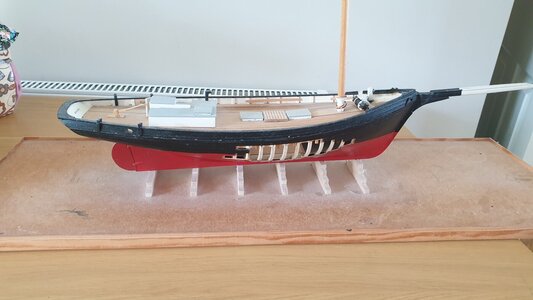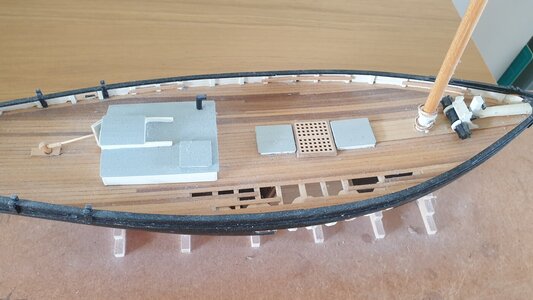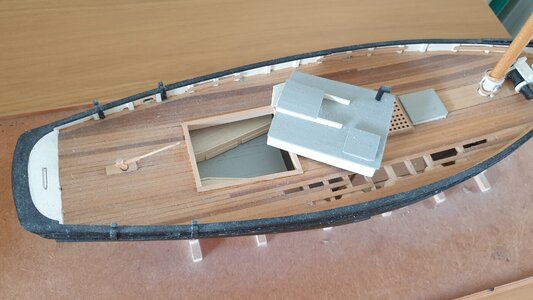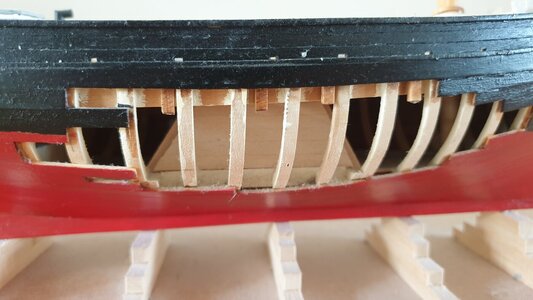I recently started a new build, and saw that there was not yet a log for this kit here (although a number of forum members seem to have built it), so decided to chronicle my progress. Afraid that I had already started a few things before I decided to record the process, so the first few photos are “re-enactments”.
The kit is Model Shipways’
Emma C. Berry in 3/8” scale (1:32), which recreates in miniature a sloop-rigged well smack built in 1866 in Noank, Connecticut. The vessel survived over a century of use as a fishing boat, coaster and yacht, going through numerous changes of rig, accommodation and configuration before being donated to Mystic Seaport Museum. There it was restored twice, and is now on display as part of the floating collection. The vessel is a favorite with the museum’s visitors, and Mystic Seaport assisted in the development of the kit, which shows the vessel as it was after its second restoration in 1992.
Construction is plank on frame with a high level of detail. The kit contains sheets of laser-cut parts in three thicknesses, a comprehensive wood package (strip, square, and round), a small set of britannia metal cast fittings, brass pins, eyebolts, rings and belaying pins, brass strip and wire, copper chain, wood blocks and deadeyes, six cards of rigging cord in two colors, and decals for the stern and scrollboard decorations. All of the wood parts are solid, even-grained basswood (no plywood or mdf). Four sheets of plans (by Ben Lankford) include drawings of all of the laser-cut parts, a hull construction drawing, a deck arrangement drawing, and a rigging plan, but no conventional lines drawing (one can be extrapolated from the frame shapes and other drawings). A 38-page instruction book contains more sketches and photos. It includes a brief introduction to the process of modelling (it assumes no prior knowledge), some of the traditional tutorial material (how to scribe a waterline, etc.), before taking the builder through the construction process in sufficient detail to get a decent result.
The drawings and material allow the construction of an interior, which is conjectural, and the structure of the model follows the construction of the actual vessel, more or less, although some stacked assemblies, such as the stern deadwood, are provided as single pieces which can be scribed to represent the individual timbers. The transom is also provided as a solid plank, rather than framed and planked as in the original. The plans and instructions have lots of details showing how the vessel is actually built, as well as possible simplifications for the modeller, so one can build as accurate a replica as one wants or as much as eyesight will allow.
My assessment is that quality is reasonable, what I remember from Model Shipways kits in my youth (my dad thoroughly enjoyed their big
Benjamin W. Latham, my brother built the pilot schooner
Phantom, and I did the old solid-hull
Rattlesnake). Materials are good and comprehensive, laser cutting is clean, and the drawings provide loads of extra detail if one wants to exploit the possibilities of the large scale. Ben Lankford’s plans are like old friends in their style and hand-drawn quirkiness. The absence of a lines plan is not as big an omission as it sounds, since the model is built on pre-cut frames. The build will show how well everything fits. Posts on the internet suggest that the kit can be challenging, in part because its basic structure is so flimsy until planking is complete. I am not especially worried about the quality of the fittings, blocks, etc., as I will probably scratch build most of this detail anyway, but will try out the items the kit provides.
View attachment 323879View attachment 323880
Afraid I had already cut a few laser cut parts out of the sheet before taking the pictures.
Fred



